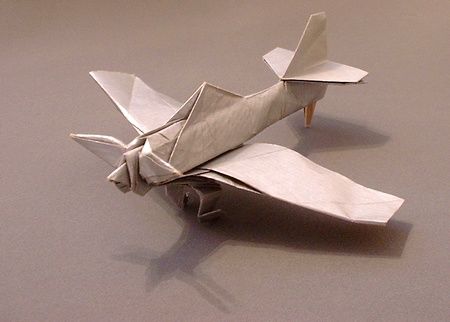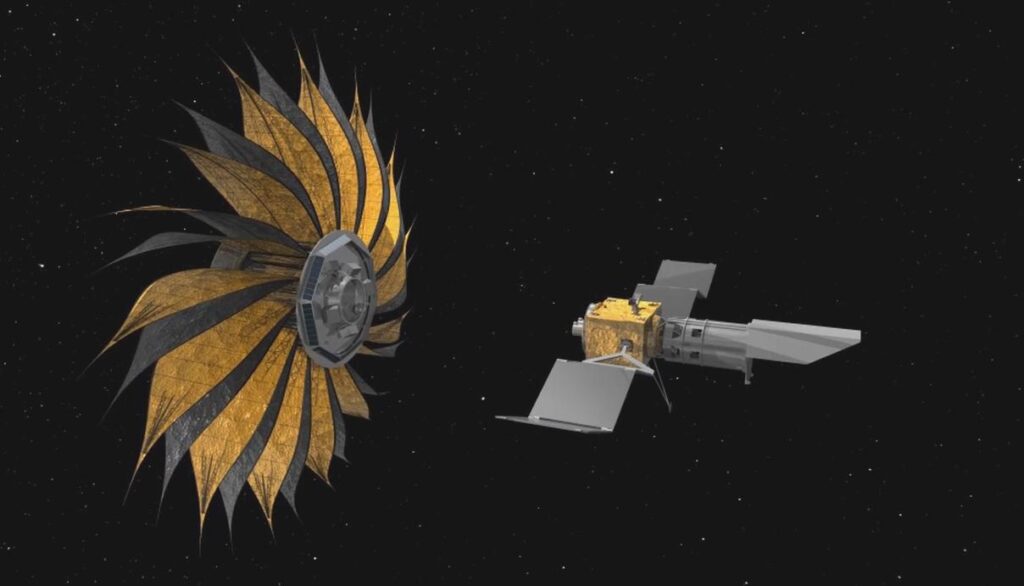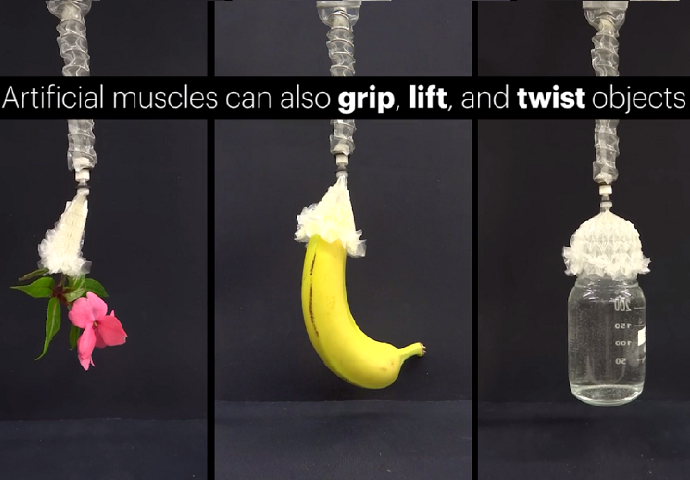
Creating a better world with Origami Code!

Origami is often considered a casual art of folding paper and making relevant and meaningful formations from it. In this article however, we are not just referring to the subtle art of folding paper and making airplanes out of it. We are talking about the concept of origami, the origins and its initial idea and how mankind grew to understand the magnificence of Origami through nature itself.
Japanese were among the first to relate to the natural state of origami by keen observation and referring to the art of folding paper forming designs, figures or structures. Originating the name from the Japanese culture, where ORI means Folding and GAMI means Paper.

If we dig deeper into history of Origami, we will find that Origami was widely taught in the schools of Europe & China for many decades. A lot of ancient cultural books from multiple races have decoded this. With time, however, the subtle art of folding was ignored and construed to be of little value by modern minded professors and discontinued from many institutes that it almost got extinct. Although forgotten in most parts of the world as any important art of value, Japan continued to dig deeper and teach more of this fascinating study in their schools and educational institutes.
After several years now, the application of Origami has proved to be tremendously versatile and is being used to change the mankind’s future. We’ll discuss the relevant applications and theories helping in the inventions re leading to inventions in many fields.
1. Origami in healthcare
In Japan lot of research in healthcare are paving its way to the new future. A Japanese researcher named Kaori Kuribayashi has developed an innovative stent graft. A stent graft has been made with the idea of origami. It can be made from a single folded sheet of material. In addition the stent grafts deploy as a result of a change in temperature. The temperature can be controlled by altering the amount of nickel used in the foil. Once it reaches its destination it is pushed out of the catheter where it will expand to its full size without the use of a traditional balloon. The deployment works in two different ways: one is triggered by heat (of the body for example) while the other is triggered solely due to the super elastic behavior of the material.

Another experiment which is taking place in Japan based on the cell traction force (CTF) which forms the basis of 3 dimensional structure. Using micro plates Cells are seeded on them. The cells then bridged the gap and pulled against each other, forming a cube like structure. These preliminary results provide a strong basis for further research into producing 3-d structure from 2-d cell sheets.
2. Space exploration with origami
Many space agencies around the Globe are following ways of origami for creating star shade, solar panels and satellite of various kinds. The deployment procedure is reliable as the size of these satellites are easily folded and can unfold itself in space. The thin material used in it weighs less which provides burning of less fuel during launch. A possible new generation of rocket-fuel tanks inspired by the traditional Japanese art of origami. NASA is interested in the concept and has ordered further tests. It would be poetic indeed to see an ancient pastime help launch humanity into the future.

Starshade Technology Development, is exoplanet Exploration Program by NASA is based on origami. It helps is exploring the planets nearing the sun as it can stop sun reflection and telescope can differentiate the light from an exoplanet separately from that of its host star. Moreover it can provide clues to its habitability, and potentially could provide signatures of the presence of life itself.
How small things can get triggered to big things, as origami provides its way in Astrophysics.
Astrophysicist Koryo Miura invented the Miura-ori fold in 1970, which would one day become one of the most well-known and well-studied folds in origami. Using this technique, the creases create parallelograms, which collapse and unfold in one motion. Miura had proposed the idea in 1985 and it was realized in 1995 on Japan’s Space Flyer Unit satellite as an efficient way to pack solar panels for a spacecraft.
Despite its long history of use, the Miura-ori found new applications on Earth. With its folds, floppy sheets gain form, stiffness, and thus become metamaterials – materials whose properties are not determined by their chemical composition but by their structural characteristics. Moreover, the Miura-ori is unique in having what is known as a negative Poisson ratio. Top and bottom contract when you squeeze them. Most objects, however, aren’t like that. A banana will squirt a messy mess after squeezing it, for example.
3. Origami in Aviation
As the applications of origami grow in various industries its impacted the aircraft industry. The origami code has benefit the aerodynamics such as deployability, stowability, and portability.
The origami craft has been around many years despite what many people might think. We often fold paper airplanes for fun as part of this ancient art of paper folding, which originated in China and Japan around 1400 years ago. There are tens of thousands of designs now, thanks to Akira Yoshizawa, a great teacher who contributed thousands of designs to this art in the 20th century, causing a renaissance of creativity all over the world.

However, there is more to origami than just entertainment. Businesses specialize in the design and creation of folding patterns, which can be used to create any shape from a sheet of paper.
Basic folds are made by folding a flat piece of paper along lines marked on it into a triangular shape, with relatively little processing necessary to do so. However, folds are more complex than meets the eye.
In making the structure of aircrafts light, consumption of fuel has reduced to 40-50% due to reduction in weight of plane.
4. Origami in Military
Research at Florida International University (FIU) is creating antennas and electronics that are remarkably compact and incredibly efficient using principles derived from the traditional Japanese art of origami.
“By using origami geometries we can reconfigure antennas to whatever shape fits our purpose,” said Stavros Georgakopoulos, assistant professor in FIU’s Department of Electrical and Computer Engineering. “These geometries offer unique advantages of collapsibility. That’s important for a number of applications, such as technology that needs to be launched in space or used on the battlefield.”

The National Science Foundation awarded Georgakopoulos a $2 million grant to support his work with colleagues at Georgia Tech. As part of the effort, the team plans to develop novel antenna shapes that can be folded flat and expand into significant spaces that offer high-speed, ultra-broadband capabilities.
“A soldier will be able to carry a powerful antenna into combat folded in his back pocket,” said Georgakopoulos.
The antennas could be used for a number of types of military and commercial equipment, including communications equipment, wireless sensors, healthcare monitoring sensors, and portable medical equipment.
Traditionally a form of paper folding, origami can also be viewed as a moving art. Recently, mathematicians have focused on theoretical and practical questions raised by origami, resulting in advances in many fields.
The materials used to construct origami structures are diverse. In addition to paper, Georgakopoulos uses flexible dielectrics and plastics. Using inkjet printing software, the researchers deposit conductive materials on paper in order to make antenna elements that can receive and transmit signals.
During the workshop, Georgakopoulos will provide academics, industry, and government representatives with opportunities for discussion. Participants will include well-known origami artists.
Origami’s health benefits:
Origami, or bending paper in an Origami manner, can be advantageous to our health? We can benefit from Origami if we practice it regularly.
- As we age, there are things we can do to keep our brain healthy, according to an article by AARP (American Association of Retired People) entitled, “Boost Your Brain Health.” We strengthen our brains by working on mental challenges that build on our innate talents and abilities.
- As well as providing exercise, origami is also a great way to stimulate one’s mind. As well as increasing hand-eye coordination and fine motor skills, origami also improves the ability to concentrate and think clearly. A direct stimulation of the brain occurs when the hands are used. Art therapy and rehabilitation after stroke and injuries are some clinical settings where origami is used.
- Following instructions, as well as learning new skills and activities, paper folding challenges our cognitive abilities. Hands become physically active during this process. Both the left and right halves of the brain are activated by the impulses sent to the brain. Brain regions involved in the sense of touch, motor control, and visual processing are activated and brought into play. The brain is further stimulated by Origami’s exploration of memory, non-verbal thinking, attention, 3D comprehension, and imagination.
- Watching something transformed from paper into something else offers us emotional satisfaction. Folding paper is a relaxing activity for many. When we share our skills and creations with our grandchildren, they are often fascinated.
In what ways is Origami contributing to a sustainable future?
The Japanese art of paper folding may seem unlikely to inspire scientists and engineers, but it is at the root of all sorts of new innovations. The reason for this is that origami’s elegant subtlety is derived from powerful mathematical principles that also apply to metals and plastics.
“We can draw on ideas, structures and mechanisms that already exist in the world of origami,” says Robert Lang, a former NASA physicist and a consultant with expertise in origami. “But we can also use mathematical tools that describe the folding that allows us to design artistic origami to create new folding structures that specifically solve technological problems.”
You can make large structures with origami that fold up for transport or fit in tight spaces. A single motor can be used to drive complex mechanical systems with intricate folding patterns.
These six devices are inspired by origami:
1. Deep-sea grabber
Robert Wood, a roboticist at Harvard University, designed a grabber to capture delicate deep-sea creatures with origami. Each of the device’s five arms is made up of interconnected pentagons and triangles that fold to form a 12-sided container that can be used to trap soft-bodied marine animals such as jellyfish and octopuses.

Using a single motor, the grabber can fold its arms to resemble a submarine. In an environment like deep ocean, fewer components mean fewer things can go wrong. “Simplicity is key,” says Wood. “You don’t want any overly complicated mechanisms when you’re dealing with such a harsh environment.”
2. Bulletproof shield
The bulletproof shields used by police can weigh 90 pounds or more and are designed to protect only one person. Engineers at Brigham Young University have folded a 55-pound shield that can protect several people and fit easily into the trunk of a car by using origami.

Larry Howell, professor of mechanical engineering at the university and the team’s leader, says the design is inspired by a specific folding pattern that dates back nearly 100 years. Yet the thick bulletproof fabric needed tweaking before it could be folded like paper. The fabric is sewn with rigid panels, and the soft areas between plates form hinges.
3. Planetary explorer
Spacecraft have a limited amount of room. A NASA engineer called Jaakko Karras used folded circuit boards to create a wheeled planetary rover. This robot’s structure and control system are provided by the circuit boards.
Spacecraft’s rover’s wheels are designed to fold up tight during spaceflight and then to return to their original position when they arrive at their target. The robot can fold its wheels again if it encounters a tight space while motoring across some distant planet.

Dr. Karras believes several of these small, highly maneuverable rovers may replace or complement NASA’s bigger, more expensive rovers in the near future. He suggests we might pursue a new paradigm using many small rovers as opposed to a single, high-value large one.
NASA is developing software to control these swarms in the hopes that future missions will use them.
4. Tiny ingestible robots
What if you could swallow a robot capable of moving around inside your body and performing simple surgical procedures? A scenario like this could be closer to reality than you think, now that MIT researchers have built a robot inspired by origami that folds small enough to fit inside a pill; once inside the gut it unfolds and guides itself with external magnets.

An artificially intelligent stomach was successfully removed from a computer-built mockup with a battery inside. It could take as long as six years to test the little bot on animals and humans, claims Daniela Rus, the leader of the group behind the device.
5. Star shade
Due to the brightness of the stars around which exoplanets orbit, it’s notoriously hard to observe them – trying to observe a speck of dust floating close to a light bulb is like trying to observe a speck of dust. In order to make space telescopes more efficient, engineers at Jet Propulsion Lab are developing a giant flower-shaped shade. An orbiting space telescope would be covered by the shade, which would block starlight and allow detailed observations of exoplanets.

“It’s an incredibly precisely sculpted shape,” Lang says of the shade. “And the whole thing, when it’s opened out, needs to achieve incredibly high precision in its positioning.”
An origami pattern known as a “flasher” was used to design the giant cylinder shape. Researchers at Princeton University are now testing prototypes of the shade in collaboration with NASA.
6. Artificial muscles
Researchers have been developing “soft” robots that would not cause injury to nearby humans due to the rigid bodies and the way they move. Harvard professor Woods has used origami to create soft artificial muscles useful for such bots.

These folds make up the muscles, which are enclosed in sacs filled with fluid. A vacuum causes the skeletons inside the sacs to collapse – allowing the muscles to contract just as real muscles do.
However, tests have shown that they can lift as much as 1,000 times their own weight despite still being in an early development stage.
